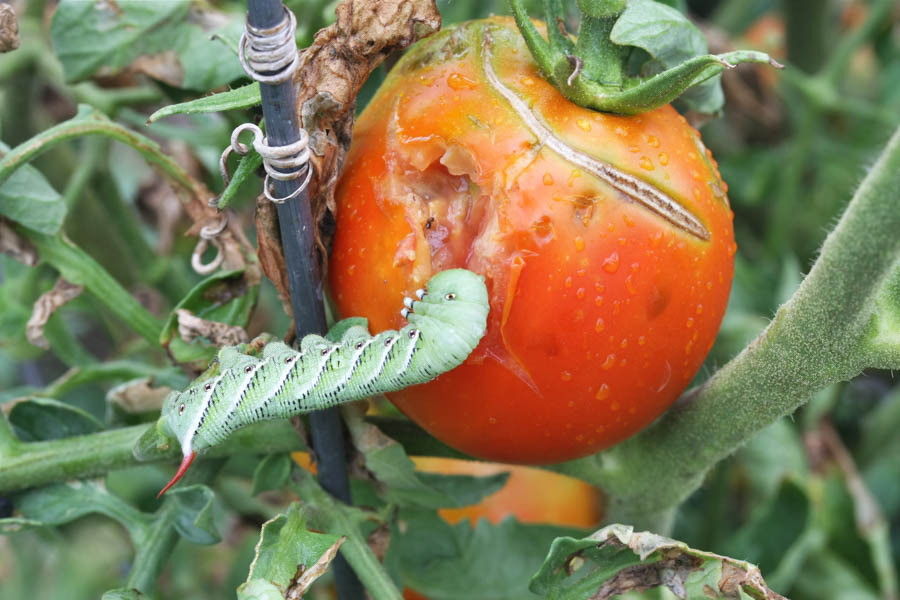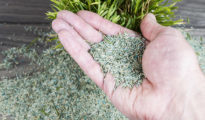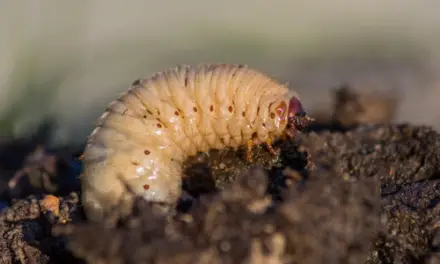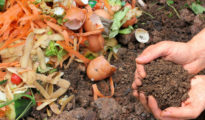Tomatoes are one of the most popular crops grown in home gardens and on a commercial scale. However, one of the most common pests that tomato growers face is the tomato hornworm. This destructive insect can quickly ruin entire crops if left unchecked, making it a major threat to farmers and gardeners alike. In this blog post, we'll explore the biology and behavior of the tomato hornworm, the damage it can cause to tomato plants, and methods for controlling and preventing infestations.

What is the Tomato Hornworm?
The tomato hornworm, also known as the Manduca quinquemaculata, is a type of caterpillar that feeds on the foliage, stems, and fruit of tomato plants. The tomato hornworm is the larvae of the sphinx moth, a large moth with a wingspan of up to five inches. The adult moth lays its eggs on tomato plants, and the eggs hatch into tiny larvae, which are initially very small and difficult to spot. As the larvae grow, they become larger and more noticeable, reaching up to four inches in length. The tomato hornworm is primarily green with white stripes along the sides of its body, making it difficult to spot against the green foliage of tomato plants.
Tomato Hornworm Damage
Tomato hornworms are voracious eaters and can quickly defoliate a tomato plant if left unchecked. They typically feed on the leaves and stems of the plant, but they will also eat the fruit of the plant if they run out of other food sources. The tomato hornworm can cause significant damage to tomato plants, including stunted growth, reduced fruit production, and even death in severe cases. If a tomato plant is heavily infested with tomato hornworms, it may be difficult to save the plant, and it may need to be removed and destroyed to prevent the infestation from spreading.
Signs of a Tomato Hornworm Infestation
Tomato hornworms can be difficult to spot, as they blend in well with the foliage of tomato plants. However, there are a few signs that you can look for to determine if your tomato plants are infested with these pests. The first sign is the presence of droppings or frass on the leaves or ground around the tomato plant. This is a telltale sign that tomato hornworms are feeding on the plant. You may also notice areas of defoliation on the plant, where the leaves have been eaten away. If you spot small holes in the leaves of your tomato plant, this is also a sign of a possible tomato hornworm infestation.
Controlling and Preventing Tomato Hornworm Infestations
There are several methods for controlling and preventing tomato hornworm infestations. The first step is to manually remove any tomato hornworms you spot on your plants. You can do this by picking them off the plant by hand, or by using a pair of garden shears to snip them off. You can also attract natural predators of the tomato hornworm, such as parasitic wasps, to your garden by planting flowers that attract these insects.
Another effective method for controlling tomato hornworms is to use insecticides. There are several types of insecticides that are effective against tomato hornworms, including Bacillus thuringiensis (Bt) and spinosad. These insecticides are derived from natural sources and are safe to use on tomato plants. When using insecticides, it is important to follow the instructions carefully and to apply the insecticide only to the affected areas of the plant.
How to Prevent a Tomato Hornworm Infestation
Preventing a tomato hornworm infestation is also possible. One way to do this is to rotate your tomato crops each year, planting tomatoes in a different location each year. This can help to disrupt the lifecycle of the tomato hornworm and prevent them from becoming established in your garden. Additionally, you can use row covers to protect your tomato plants from adult moths that may lay eggs on the plants.
Another way to prevent tomato hornworm infestations is to keep your garden clean and free of debris. Tomato hornworms can overwinter in plant debris and other materials left in the garden, so it is important to clean up your garden in the fall and dispose of any plant debris properly.
Biological Control of Tomato Hornworms
Biological control of tomato hornworms is the use of natural predators or parasites to control the population of the pest. One of the most effective biological controls for tomato hornworms is the use of parasitic wasps. These wasps lay their eggs on the tomato hornworm larvae, and when the eggs hatch, the wasp larvae consume the tomato hornworm from the inside out, killing it.
Another natural predator of the tomato hornworm is the green lacewing. These insects are attracted to the sweet nectar of flowers and can be used to control the population of tomato hornworms in your garden. Ladybugs are also effective predators of tomato hornworms, and can be purchased online or from a garden center.
Tomato hornworms are a common pest that can cause significant damage to tomato plants. However, with the right control methods, it is possible to prevent and control infestations. By manually removing tomato hornworms, using insecticides, attracting natural predators, and practicing good garden hygiene, you can keep your tomato plants healthy and free from this destructive pest. With a little bit of effort, you can enjoy a bountiful tomato harvest and keep the tomato hornworm at bay.


















